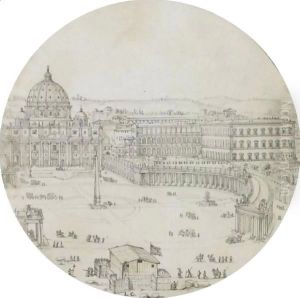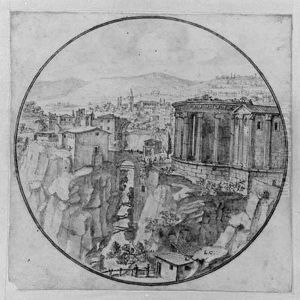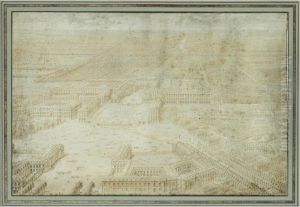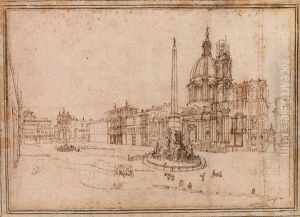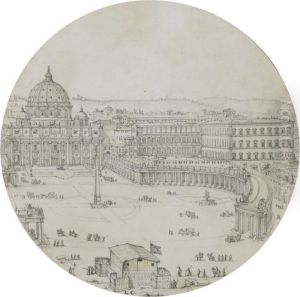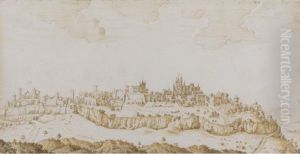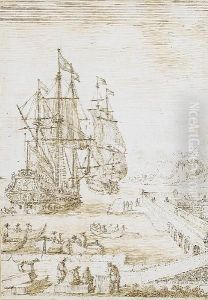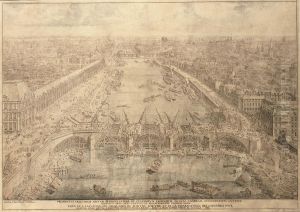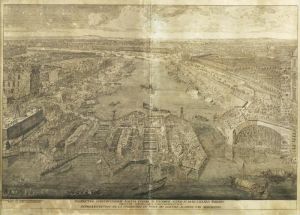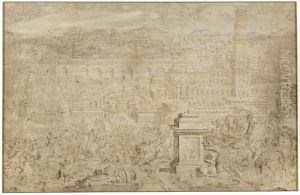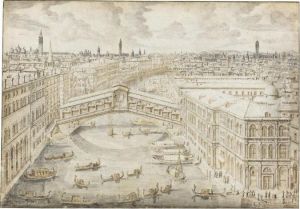Lieven Cruyl Paintings
Lieven Cruyl, born in Ghent in 1634 and passing away in 1720, was a Flemish artist and engraver known for his detailed cityscapes and architectural drawings. His work provides a valuable visual record of urban landscapes and architecture during the 17th century, particularly within Italy and the Southern Netherlands.
Cruyl's early life is not extensively documented, but it is known that he was trained as an architect and artist. His talents soon turned towards engraving, a field in which he would excel and gain considerable recognition. His career took a significant turn when he traveled to Italy, where he spent a considerable amount of time, especially in Rome. The influence of Italian architecture and urban design is evident in much of his work, reflecting his fascination and detailed study of the subject.
While in Italy, Cruyl undertook the task of documenting the cityscapes of Rome, producing a series of engravings that were remarkable for their accuracy and detail. These works not only highlighted his skill as an engraver but also served as valuable records of Rome's urban landscape during the 17th century. His engravings captured the grandeur of Rome's architecture and the vibrancy of its streets, offering insights into the city's appearance before modern changes.
Upon returning to the Southern Netherlands, Cruyl continued his work, focusing on cities such as Ghent and Antwerp. His engravings of these cities are among the earliest and most accurate visual documents of their time, providing important historical insights into urban development in the region.
Cruyl's contribution to the field of art and his role in documenting the architectural and urban landscapes of the 17th century have made him a significant figure in art history. His works are not only appreciated for their artistic merit but also for their historical value, offering a window into the past and shedding light on the urban and architectural evolution of his time.
